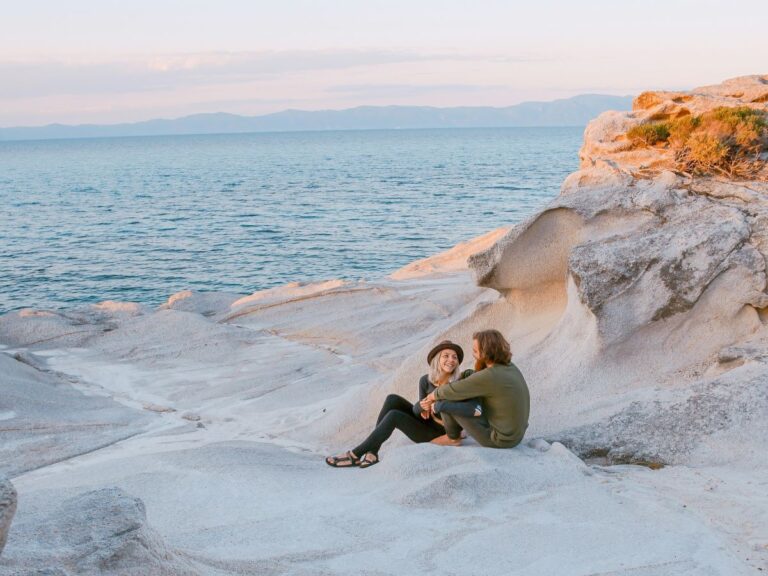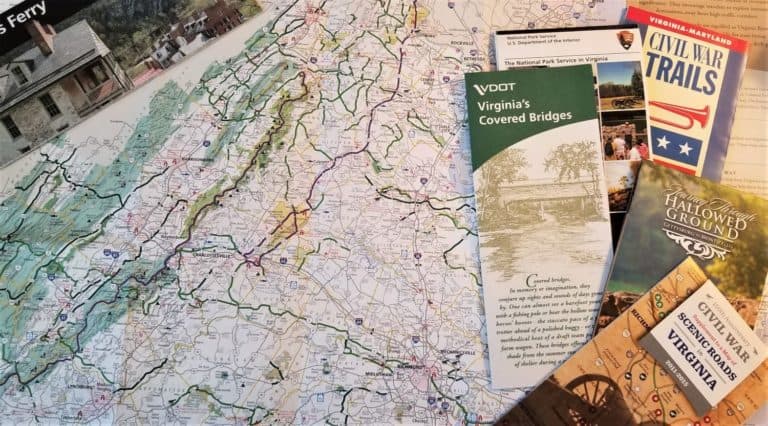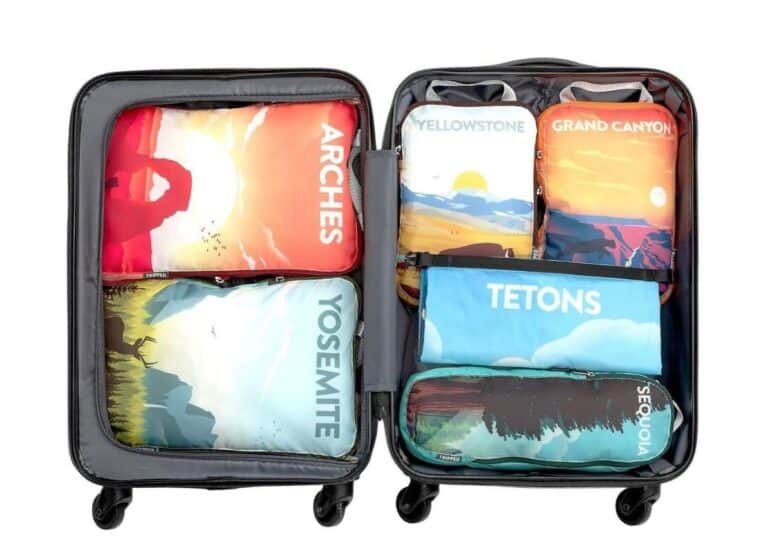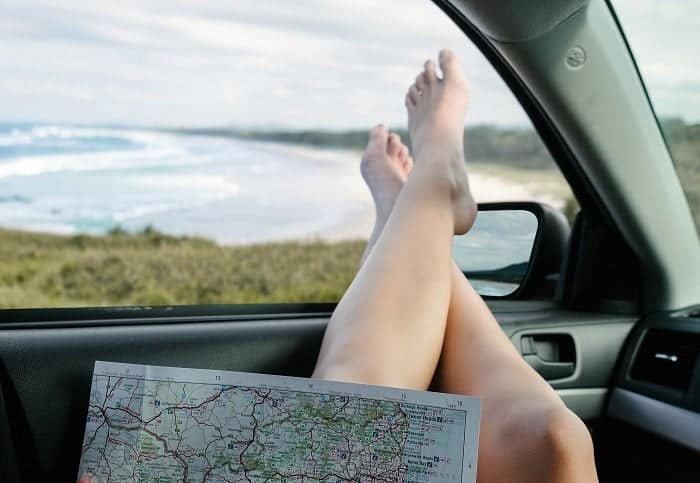14 Ways to Avoid Feeling Isolated if You’re Stuck at Home
This site contains affiliate links to products or services that I recommend. Any purchases made through these links don’t add anything to your purchase price. It helps me keep the lights on and bring you quality travel tips. As an Amazon Associate, I earn from qualifying purchases. Thanks so much for your support!
Are you looking for ways to avoid feeling isolated when you’re stuck at home? We all may have seasons in our lives where we’re not able to get out as much as we’d like for one reason or another. In recent years (and even now) COVID-19 may have created some unexpected and frustrating scenarios that were out of our control. Or maybe you have children or elders at home that need care and you don’t always have someone who can give you a break. Maybe you just had surgery or a serious injury and your recovery will keep you home for a period of time.
Isolating situations may cause even the best of us to feel alone and overwhelmed at times. And especially if you’re home for health reasons, you could begin to feel disconnected from the world around you. I hope that one or more of these ideas to avoid feeling isolated helps with your loneliness.
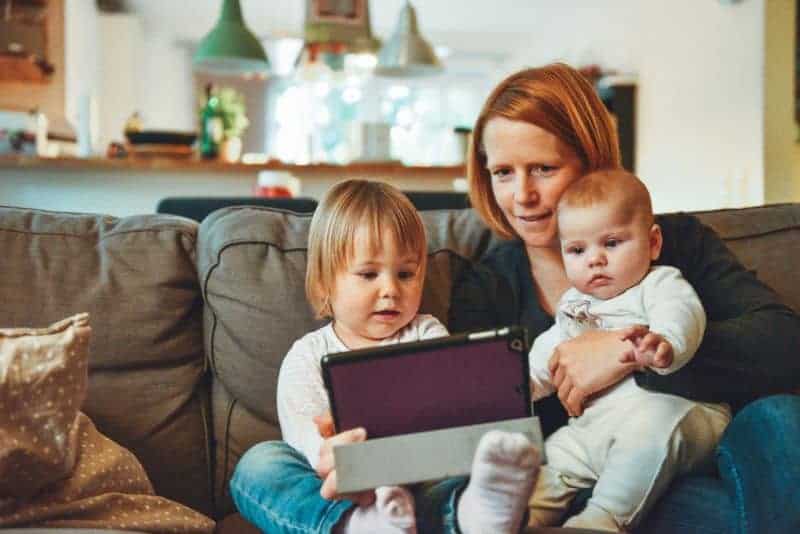
5 Tips to Help When You’re Feeling Isolated or Stuck at Home
Psych Central, the Internet’s largest and oldest independent mental health online resource offers these “5 Tips to Banish Loneliness“. I’ve taken a look at these and recommend some activities below to help you avoid feeling isolated when you’re unable to get out of the house or anytime you’re feeling lonely.
- 1 – Find something to do
- 2 – Be good to yourself
- 3 – Help someone
- 4 – Be with others
- 5 – Go somewhere new [even if it’s virtual]
Look on the bright side of the situation. If you must be home, you’ll have a chance to enjoy some fun activities with your family or catch up on some of your to-do list. Here are 14 creative suggestions for things to do to help you stay connected with others and avoid feeling isolated.
If you’re home as a family, consider making an activity idea jar. Write these and other ideas on slips of paper and if someone in the family says they’re bored, have them choose a slip of paper to get a new idea. You can even get sneaky and slip in some household chores.
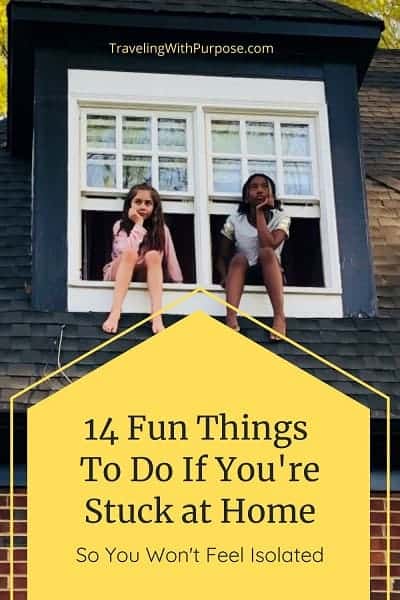

Travel the World Through Virtual Tours
Since you’re not physically able to “go somewhere new” when you’re stuck at home, virtual tours can help you feel as if you’re in a new place. Here are just a few of the possibilities for virtual travel online that can help you avoid feeling isolated.
Guide yourself through the Smithsonian National Museum of Natural History and stop whenever you want to zoom in to see more detail.
Take a walk through the National Museum of African American History with the museum’s founding director, Lonnie G. Bunch III as your guide.
Go Inside the Space Shuttle Discovery, then learn about Sally Ride and the women behind the Discovery
No plans to go to Paris anytime soon? You can see world-class art and antiquities through a virtual visit to The Louvre and Musée d’Orsay.
Looking for art in the U.S.? The Smithsonian National Portrait Gallery tells the history of America through portraits of Presidents, First Ladies as well as paintings of everyday life in different eras over the last 200+ years.
Find virtual tours and digital media for sites like the world-renown Terracotta Army in China by visiting the National Cultural Heritage Administration’s website. (It will display first in Chinese, but you should see an option at the top of the browser to translate it to English.)
Hear about the work at the Smithsonian Pathology Lab Virtual Tour at the National Zoo in Washington DC with Dr. Kali Holder.
Learn Origami

Do you want to keep your hands busy? Try learning origami. Here are simple instructions from The Spruce Crafts for making the traditional origami paper cranes, but it’s easy to do an online search for “origami instructions” and you’ll find dozens of other shapes you can try.
The good news is that you don’t need special paper for it. Try wrapping paper, card stock, plain or colored notebook or copy paper, or even newsprint or magazine pages. This is a fun group activity to do with kids as well. Be creative, have fun, and brighten up your home at the same time.
Take a Class Online
Whether you want to learn more about a topic for work, learn a hobby, or take a course for college credit, you can most likely find it online and sometimes for free. Many online classes are in a video format where you see the instructor on screen, just as if you were in a physical class. This “human” interaction can help you avoid feeling isolated and fill the gap when you can’t get out to an in-person gathering.
Did you know that Harvard University (yes, THAT Harvard) offers a wide variety of free online classes to everyone? You can find out more about it here.
To find other classes, first, check your local public library to see if they offer memberships to online class resources. My local library gives me FREE access to thousands of video classes offered by Lynda.com. They offer topics ranging from Audio Engineering to Writing and everything you can imagine in between.

There are many other online course platforms as well. Type in “free online class about…” with the keywords for the topic you want to learn and see what comes up.
Read a Book or eBook
In our house, we always have more than a few books, whether paper or electronic, that we haven’t gotten around to reading. How about you? As the President of Harvard University, Charles Eliot once said, “Books are the quietest and most constant of friends; they are the most accessible and wisest of counselors, and the most patient of teachers.”
What better way to while away the hours when you’re stuck at home than with the characters of your favorite book? These constant friends in literature can help you avoid feeling isolated. If you’re looking for some interesting historical fiction, check out this series about the Oregon Trail by A.T. Butler. Some of these books are available in print or Kindle to download immediately.
“Books are the quietest and most constant of friends; they are the most accessible and wisest of counselors, and the most patient of teachers.”
Charles W. Eliot
Do you have any friends or family who are self-published authors? Why not buy their book(s), then after reading it, help to promote it by sharing about it on social media and writing a review online? What a sweet way to connect with them and encourage them as well. Amy Teegan* is a personal favorite author of mine.
*Disclosure: I am related to Amy Teegan, but this doesn’t change the fact that I love and recommend her books for their thoughtful perspective on the ups and downs of life.
Work on a Citizen Science Project
What is a Citizen Scientist? It’s a member of the general public who volunteers to observe the world around them or data provided to them and analyzes the information to assist and collaborate with professional scientists in a wide variety of fields. What better way to help and learn if you’re interested in Science?
These projects are sometimes done when the amount of data or the area that needs to be covered is so large that it’s difficult for professionals to accomplish the task alone. Citizen Scientists can be nearly any age. Here are a few resources for finding active projects.
The SciStarter Project Finder Tool can help you drill down to the perfect activity, no matter what your age and interest. If you love science and want to help the scientific community, visit the site and choose a topic, keyword, project type, and project setting. For example, you can select only “Projects to do while at home” or “Projects to do on a walk”. You can also find projects for your kids by choosing a specific age group or a family project that you can work on together. For example:
You can help researchers in Croatia monitor wolf populations. Download the app or log in & begin tagging the species in the images. It’s as simple as that! You don’t need to be an expert to take part, they want your best guess.
National Geographic also offers Citizen Science Projects for kids in grades 3 through 12 and up. Kids can participate in a bird or butterfly census, collect weather data, or survey and listen for frogs and toads.
Help With Climate Change Research

Would you like to get some fresh air? NASA and The GLOBE Program need your help. You can observe trees to understand changes in biomass and effects on the carbon cycle. This project uses your mobile devices to take tree height measurements and record tree circumferences, then report your findings.
Join the National Phenology Network as a Citizen Scientist. This organization connects government agencies, non-profit groups, educators and students of all ages to monitor the impacts of climate change on plants and animals in the United States. Their goal is to have 4000 active observers at all times.
Do you like to look at the stars and galaxies? At GalaxyZoo you may be tasked with searching images of the heavens and documenting what you see. They need your help to classify the galaxies according to their shapes.
Enjoy a Picnic Inside or Out
Are you or the kids climbing the walls? All you need for a picnic at home is a blanket and whatever food is in the house. No fancy picnic baskets, utensils, or even special foods. Just spread out a blanket on the grass or the floor and the space is transformed into a magical world.

If it’s a family picnic, ask the kids for ideas on where to sit, what to eat, and what else to do. Consider eating finger foods in a tent made of blankets. Or pile up pillows and enjoy popcorn and lemonade while you tell stories, read their favorite book, or dream about your next vacation. I’ll guarantee it will be an event that they won’t soon forget and it will help you avoid feeling isolated.
Work in the Yard
There are so many benefits to working outside. You have a chance to enjoy some fresh air, burn calories, soak up some Vitamin D, and accomplish one or more tasks that have probably been on your to-do list forever.
If you have kids that need to burn some energy, see if you have some seeds lying around. You and the kids can plant a garden or even just a few containers with seeds. Watering, caring for, and watching seedlings come up is a wonderful way to learn about the natural world.
You may even have a chance to say hello and chat with a neighbor over the fence.
Research & Record Your Family History
Have you been thinking about capturing your family history before it gets lost? I’ve found that projects like this often get left off my list of daily priorities because of more urgent tasks. When in reality, as the older generation grows even older, our family history and genealogy are in danger of being lost forever.
I’ve also discovered that when I spend time connecting with my family and learning about their history, I feel much more significant and avoid feeling isolated in this vast world of ours.
To get started, you can first check your local library online to see if they have resources and tips for digging into genealogies and local family history. You can also do a good amount of research online or with family members to get your family tree started.
If you haven’t started yet, you can begin by building a family tree either on paper, on a template on your computer, or online at one of the many FREE websites, like Ancestry.com.
A template of some kind is helpful for making a list of family members’ names and how they’re connected. Then fill in as much information as you know about birthdates, birthplaces, wedding dates, death dates, and cemetery locations. You may realize that you have quite a bit of missing data. All the more reason to pull it all together in one place.

Reach Out to Family Members
The next step in building your family tree is to talk to other family members to fill in more info. Call a member of the oldest generation who may have some free time. Maybe your grandparents or a great-aunt. Besides, at a time like this, they may enjoy a chat since they may not want to get out and about either. Start gathering dates, places, and stories in writing or by recording audio or video.
It’s important to remember that this generation will not be around forever. I started gathering family history stories before my mom passed away (at the age of 91). After she was gone I still thought of questions that I wish I had asked.
This might also be a good time to order a DNA test for you and/or someone in the older generation that would agree to it. These results show the person what parts of the world their ancestors come from. You can do it all online and through the mail.
Sadly, I forgot to do this test with my mom. We don’t have much family tree info from her side of the family because her mother was an orphan and I regret that we don’t have that data.
Connect Electronically If You Can’t in Person

Yes, that means call your mother. Or your father, grandfather, siblings, kids, friends…whoever comes to mind that you miss. Hearing a friendly voice on the phone or seeing a friendly face on Skype or Facetime can make a world of difference for all of you.
Organize Your Photos
Do you have a box or ten of old photos from previous generations that need to be sorted, labeled and maybe even scanned? That could be an interesting and fulfilling project to do while you’re home. It’s a project that takes a chunk of focused time to organize and even time to talk to relatives to get clarification on who’s who in the photos. Even if you have a backlog of recent digital images on your phone or computer, those could be organized too.
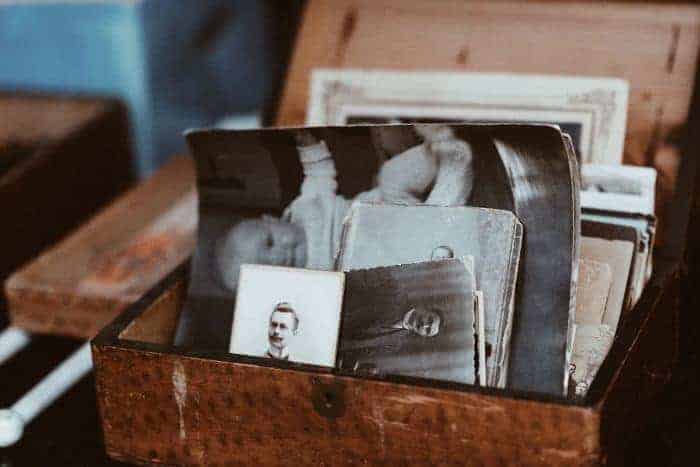
Create a Photo Book
You might not think of creating a photo book, but I’ve found that in the digital age, if we don’t do something tangible with at least some of our favorite pictures, then no one ever looks at them again after we share them the first time on social media or with friends and family. You can put together photo books about vacations, for people, groups, or even as an annual keepsake of the events of the year.
There are several styles of albums. If you don’t want to spend too much time, then generic photo album binders like these don’t take much creativity, just the time to put pictures in the order you want and slide them in. Just be sure that the pages are acid-free or archival quality so they won’t ruin your photos. Especially the old family photos that don’t have any back-up copies. [I always recommend scanning vintage photos as soon as possible to guard against losing them or damaging them.]

If you like to be a little more artistic and creative, you can also put together a scrapbook-style photo album with colorful papers, stamps, and other embellishments like these. Of course, if you don’t have the supplies on hand you’ll have to order them online if you can’t get out right away.
A third option that is so fun and easy to make, especially with your digital photos is a digital photo book like the ones you can create at Blurb, Shutterstock, or other photo processing websites. Blurb even has professionally designed starter templates so every page will be stunning. I’ve made several coffee-table-style photo books and they’re truly keepsakes that will last for generations.
Check Out Google Arts & Culture
Do you love the Arts and exploring the world around you? It’s impossible for you to travel while you’re stuck at home, so take a stroll around the “Google Arts and Culture” website. It’s packed with ways to dive into far-off destinations through Google Street View, interesting people, art, and artists, like Monet’s Water Lily Pond, search art by color, artist, learn more about sports, nature, and ancient artifacts. You can also explore historic locations like the Palace of Versailles in 3-D.
Listen to Podcasts or Audiobooks
Looking for something to keep your mind busy while you’re cleaning the house or doing laundry? Try listening to podcasts or audiobooks. The variety of content is virtually endless and you can download FREE episodes to your cell phone from sites like iTunes (for Apple devices) or Google Play (for Android devices). You can also ask to play a podcast on your voice-controlled personal assistant listening device, like Amazon Alexa or Echo, Google Home Hub, and many more.
Some of our favorite general information podcasts come from “How Stuff Works“. We listen to “Stuff You Should Know” when we’re on road trips and we always learn something new. If you have topics that you’re especially interested in, you can most likely find a podcast relating to it.

Make the Most of Your Time at Home
With all these resources, most of which are free, I hope you’ll find something that will help you stay connected with others. Thankfully in these times, we have access to so many digital and virtual portals to the outside world. There has never been a better or easier time in our history to be at home.
You may also be interested in my recent post if you have a chance to get out close to home:
Booking your trip? Here are some of the resources I use myself:
-Book great deals on flights with Cheap-o-Air
-Discover cool lodging with Booking.com
-Find the best prices and perks for cruises at CruiseDirect.com
-Reserve your vacation home rental with VRBO
-Book your car rental with RentalCars.com
-Buy your travel insurance with InsureMyTrip
-Book unique travel tours with Get Your Guide and Viator
-Find delicious culinary experiences with EatWith
-Find even more of my favorite travel resources here.
When you use these links I earn a small commission, at no extra cost to you. This helps me pay the bills and allows me to continue to create and share free tips and advice to help you travel better. As an Amazon Associate I earn from qualifying purchases.
“15 Ideas for Your Next Quick Getaway or Staycation”
This site contains affiliate links to products or services. Any commissions for purchases made through these links help to keep Traveling with Purpose going. and they don’t add anything to your purchase price. Thanks for your support!

